You are using an out of date browser. It may not display this or other websites correctly.
You should upgrade or use an alternative browser.
You should upgrade or use an alternative browser.
SpaceX Falcon 9 historic landing thread (1st landing attempt & most recent missions)
- Thread starter georgegassaway
- Start date

Help Support The Rocketry Forum:
This site may earn a commission from merchant affiliate
links, including eBay, Amazon, and others.
- Joined
- Jan 17, 2009
- Messages
- 5,204
- Reaction score
- 1,547
How about we focus on ACTUAL upcoming launches (less than 3 months) use a new thread for FH
Good idea. I wanted this thread to stand out more about the historic landings and eventual re-flights, than SpaceX in general and certainly not other things like space junk and other rockets. When the thread began...... it was still so "outlandish" that a real working rocket booster might be able to land itself safely for re-use.
So, yeah, let's discuss other stuff to some new thread and keep this more focused on the upcoming flights and issues directly related. And yes, eventually that will include the first Falcon Heavy finally getting close to launch.
BTW - after the Echostar launch that is now set for Jan 30th at 39A, is CRS-10 (ISS resupply), which is currently set to launch from 39A on Feb 8th. Well, the Feb 8th NET date was set when Echostar was listed as Jan 26th. Even at the fastest pace at LC-40 before it got blowed up, they never got prepared for the next launch in such a short timeframe.
So, good news is CRS-10 is set to launch Feb 8th. Bad news is it just does not sound practical they can repair and refurbish the pad that fast..... especially for the first time it will be used to launch since modified for Falcons. So I would not be surprised if CRS-10's NET is pushed back a few days soon. Then after the Echostar launch, possibly pushed back a few more days once they look the pad over and evaluate what needs to be done to get 39A ready to launch CRS-10.
There sure is a big backlog of flights to be flown. I have not read anything trustworthy as to when LC-40 might be repaired ready to launch more Falcons, but part of the bottleneck is only having one pad and lots of rockets. So the sooner they can get LC-40 ready to launch Falcons, the better, with two pads to use at the Cape.
Last edited:
Nytrunner
Pop lugs, not drugs
Clicked it, saw it, read it, don't really get it...back to the regular scheduled show.
alt-text?
SpaceManMat
Space Nut
- Joined
- Dec 20, 2013
- Messages
- 702
- Reaction score
- 86
jmattingly13
Well-Known Member
When the thread began...... it was still so "outlandish" that a real working rocket booster might be able to land itself safely for re-use.
Well, when this thread started, Blue Origin had already accomplished that.
Well, when this thread started, Blue Origin had already accomplished that.
No where near the same thing. And that comment is something I would expect from someone outside the rocketry community.
Last edited:
- Joined
- Jan 17, 2009
- Messages
- 5,204
- Reaction score
- 1,547
Well, when this thread started, Blue Origin had already accomplished that.
I said "real working rocket booster". As in, it launches payloads into space and comes back down for re-use. OK, so I didn't technically say "orbit", but that is the massive difference. And Blue Origin still has not flown a paid mission. Heck if you want to count rockets that took off and landed vertically, then there was DC-X, but that was a prototype for a program that never was completed.
BTW - as to the XKCD cartoon about hollowed out barge covered with paper to "trick" incoming Falcon boosters..... two things. For one, as drawn, that barge might sink with the bottom of the hull cut out. Although the Marmac 304 series do have waterproof compartments, IIRC around 28 of them, so it might be possible for it to float if enough of an outer ring of compartments was left intact.
But the big thing is this. And I know this is buried way back earlier in this thread. But let's say there were 1000 "fake" barges that looked exactly the same, transmitting exactly the same signals, surrounding the one real Space ASDS landing barge. How would the Falcon-9 booster know which one to land on?
And the answer is, the Falcon would NOT know! But, that is because when it is coming down to land, it NEVER knows about the barge.
It is programmed to aim for and land at a specific GPS coordinate on the Earth's surface. For RTLS, that is the center of the "X" on the concrete lading pad.
At sea.... it is aiming for the ocean's surface, at the given GPS coordinates. It is not aiming for "the barge" because it knows nothing of a barge. The barge does not send out any signals that the Falcon uses for landing. It had been speculated that the barge would have some localized GPS enhancer (I do not recall at the moment what they are called), but news has come out over time that the barge is not doing anything active to assist with GPS or anything else.
The one thing that the Falcon does do to "sense" what is under it, is a radar altimeter to let the Falcon know how high it is above the surface (and also the rate of descent during the critical final seconds). Now, if the barge is not right underneath..... the altimeter reads the surface of the water. But when the barge is there, the radar altimeter is reading the height above the deck. And that radar is only reading altitude (vertical distance), not trying to read a "shape" position at an X-Y location.
So, a critical task for the barge, is for it to be at the EXACT GPS coordinates that the Falcon is programmed to land at. The barge has very accurate GPS, and at the 4 corners of the barge there are hydraulically powered thrusters (propellers inside of shrouds) which rotate in azimuth 360 degrees to allow the barge to hold its horizontal position accurately.
The GPS accuracy for each is supposed to be within 1 meter. So, in theory they could misread GPS and be 2 meters apart, one having an error 1 meter north, the other having an error 1 meter south.
One way I like to think of it is like having a backyard swimming pool, and a floating block of foam 8 feet square. If I wanted to simulate a Falcon landing, then I'd program a multicopter to land at the center of the swimming pool. Then using string at 4 corners of the foam, float the foam in the middle of the pool and adjust the string to get the foam dead-center. The strings and manual adjustment would simulate the thrusters using GPS to hold the barge in place. I'd have the multicopter take off, and use programming to land at the center of the pool. If the foam block is accurately centered in the pool, if I programmed the GPS accurately, and if the multicopter's GPS was working accurately, then the multicopter should land on the foam block in the pool.
But the mutlcopter does not know what it is landing on, foam or water or land, it is simply landing at the GPS location it is programmed to land at.
I have done "RTH/RTL" type landings with multicopters a lot of times (over land). It is always impressive once activating Return To home, to see it maneuver and come down pretty close to where it took off from (Programmed to land back at the GPS location where it was first initialized). Often the landings are 1-2 meters off, occasionally farther. But then I'm using single $20-40 GPS receiver modules hooked up to $35 hobby-level Flight Controllers, Falcon-9 is using way better equipment.
FWIW - a generic image of the "thrustmaster" units as are used on the ASDS barges. The hydraulic power boxes shown on the generic barge, are mounted at the fore and aft of the ASDS's, along with other equipment
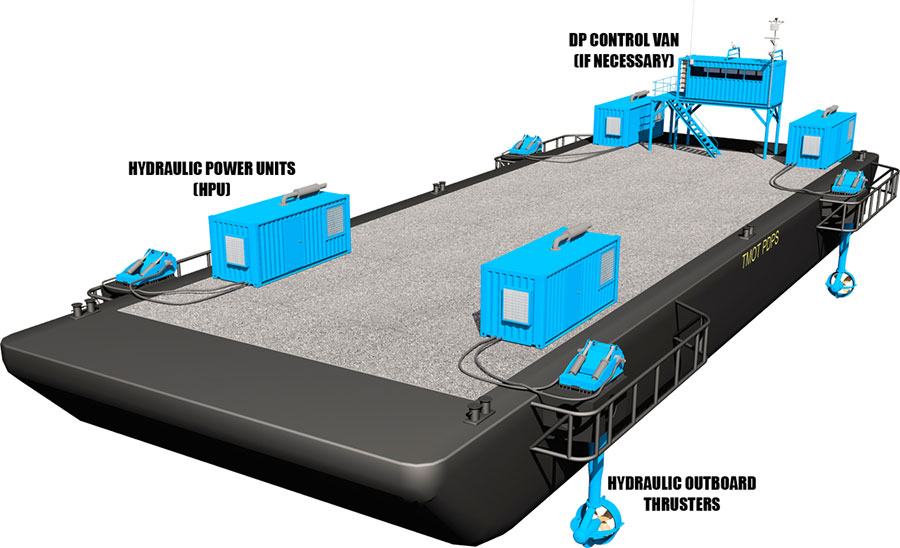
Last edited:
- Joined
- Jan 17, 2009
- Messages
- 5,204
- Reaction score
- 1,547
After the Echostar launch that is now set for Jan 30th at 39A, is CRS-10 (ISS resupply), which is currently set to launch from 39A on Feb 8th. Well, the Feb 8th NET date was set when Echostar was listed as Jan 26th. Even at the fastest pace at LC-40 before it got blowed up, they never got prepared for the next launch in such a short timeframe.
So, good news is CRS-10 is set to launch Feb 8th. Bad news is it just does not sound practical they can repair and refurbish the pad that fast..... especially for the first time it will be used to launch since modified for Falcons. So I would not be surprised if CRS-10's NET is pushed back a few days soon. Then after the Echostar launch, possibly pushed back a few more days once they look the pad over and evaluate what needs to be done to get 39A ready to launch CRS-10.
OK, well, the Echostar-23 launch has been moved to Feb 3rd. Pad 39A not ready (part of my frustrations the "FH is going to launch in 6 months" game, otherwise 39A should have been ready even before the September explosion at LC-40).
The launch NET may move even further. They have to do an on-pad test firing first, then they usually launch 2-3 days after that. And there has never been a Falcon mounted to that pad, even though Musk said a year ago they'd be test firing the just-returned OrbComm-2 at 39A. Then very quietly 1-2 weeks later they moved it to LC-40 to do a short test firing). So, first time to be mounted to a pad, interface issues, possible tweaks. Some of these they can discover inside of the Horizontal Integration building when the F9 core is attached to the TEL assembly that holds it, and hopefully this recent announcement reflects that they have at least gotten THAT far and have found the key things they need to put more time into.
For CRS-10, its launch NET has been moved to Feb 15th. But that MAY have been moved before the Echostar-23 launch. was pushed back to the 4th. And as I indicated before, there may be some after-launch pad damage issues to deal with.
So, here's some big news that's been out there for a couple of days or so. Echostar-23's booster will fly as an expendable. None of the equipment (landing legs, grid fins, etc) used for landing wlll be put on it. The mass of the payload to a GTO orbit does not allow enough fuel to try to do a safe landing on an ASDS barge (although I am not 100% sure on that. There may have been a payload launched to GTO last year at about that same mass, the booster had a very hot but safe landing. BUT, with the new fuel tanking procedures made after the pad explosion, they have lost some performance. So while the F-9 may (?) have been able to do this a year ago, not now).
The article below discusses that, as well as the "Block 5" Falcon-9 which will have increased performance (would be able to safely land after launching a GTO payload as heavy as Echostar-23). Also some improvements to improve re-use (it seems the current Falcons that have made it back are good for only 1, maybe 2 more flights. Implying the ones that had really "hot" landings may never refly. Which if true would mean even if they tried to land Echostar-23's booster for a "hot" landing, ignoring the risk of damaging the ASDS and all the costs related to retrieval, if it would never fly again anyway, then what's the point?)
https://arstechnica.com/science/2017/01/spacex-may-be-about-to-launch-its-final-expendable-rocket/
Last edited:
- Joined
- Jan 17, 2009
- Messages
- 5,204
- Reaction score
- 1,547
Well, this is quite a change in plans:
This is not such a surprise today, as I had read the following on Saturday:
So, with there being delays involving Pad 39A, to cause a lot of slippage of the Echostar-23 launch, that in turn was going to push the NASA CRS-10 launch to resupply ISS, to March. I cannot recall if they ever had two launches back-to-back at LC-40 in s little as 2 weeks apart, there is always pad damage to fix up and zero track record with repairing pad damage at 39A after a Falcon launch. So it could easily be 3 weeks or more between launches.
Seems like NASA is tired of waiting so faced with more weeks of delays it seems they pressured SpaceX to get CRS-10 launched first, Echostar later.
BTW - the TEL was raised out at 39A late in the week, a part of the pad tests.
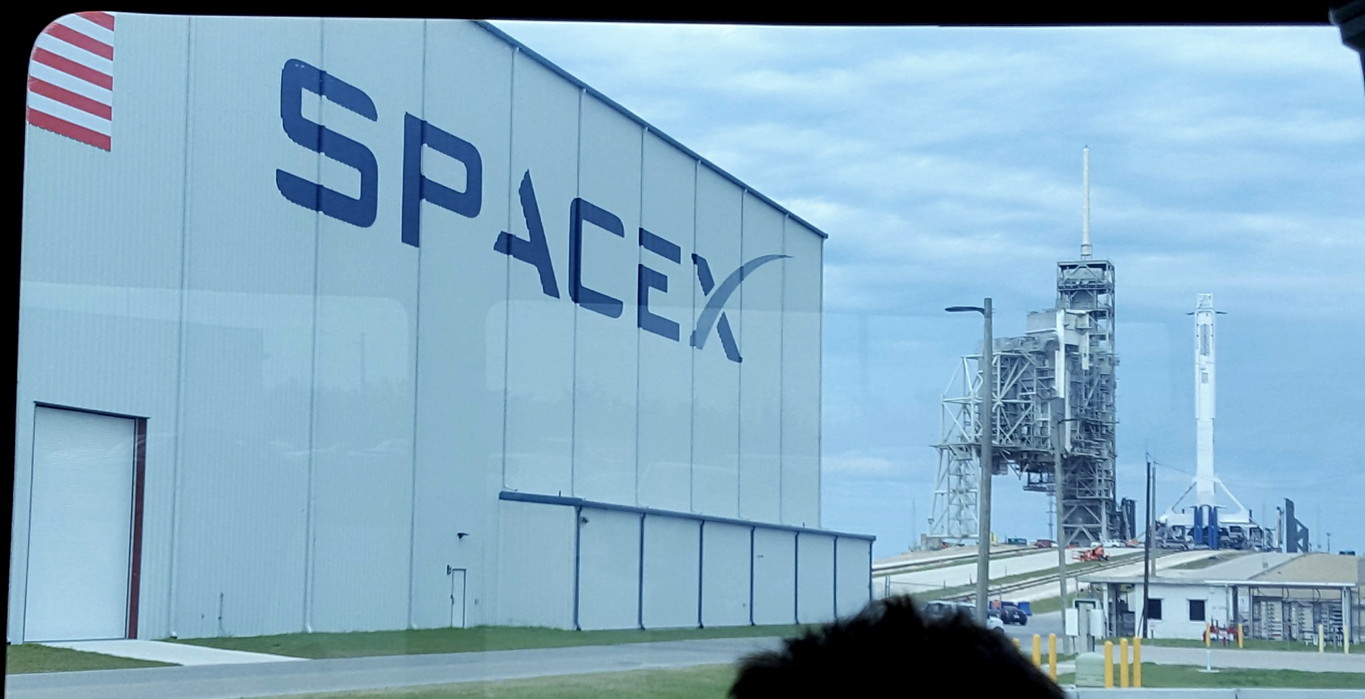
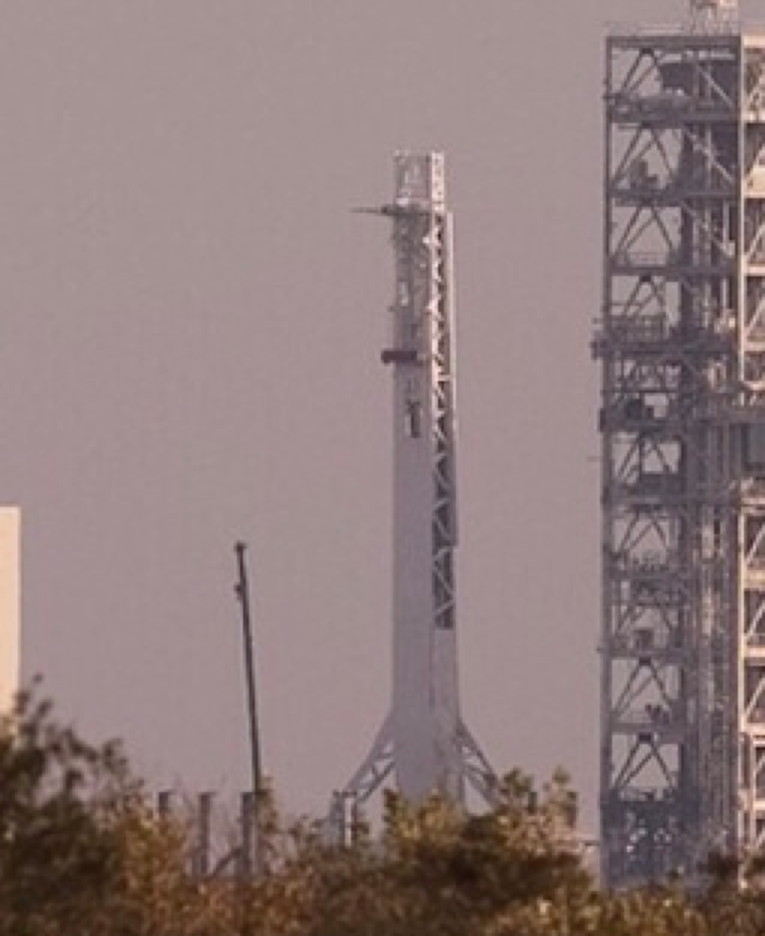
From SpaceX:
"SpaceX announced today that its first launch from Launch Complex 39A (LC-39A) at NASA’s Kennedy Space Center in Florida will be the CRS-10 mission to the International Space Station. The launch is currently targeted for no earlier than mid-February. Following the launch of CRS-10, first commercial mission from 39A is currently slated to be EchoStar XXIII. This schedule change allows time for additional testing of ground systems ahead of the CRS-10 mission. The launch vehicles, Dragon, and the EchoStar satellite are all healthy and prepared for launch."
This is not such a surprise today, as I had read the following on Saturday:
Very much still working this, but despite some good TEL testing at the pad over recent days (including a cool test relating to how the TEL will work differently than you've seen before at SLC-40), there's a lot of doubt about making Feb 3, or even close to that.
This is literally like a brand new pad, there's bound to be teething issues and you really don't want something failing on your pad at T-0!
Working is as it's not documented (where you see "X company requesting change to NET....") but what I'm being told. Could get interesting as CRS-10 is fast becoming a priority, with Dragon barging her shoulders in the line saying "I'm more important than a ComSat launch!”
So, with there being delays involving Pad 39A, to cause a lot of slippage of the Echostar-23 launch, that in turn was going to push the NASA CRS-10 launch to resupply ISS, to March. I cannot recall if they ever had two launches back-to-back at LC-40 in s little as 2 weeks apart, there is always pad damage to fix up and zero track record with repairing pad damage at 39A after a Falcon launch. So it could easily be 3 weeks or more between launches.
Seems like NASA is tired of waiting so faced with more weeks of delays it seems they pressured SpaceX to get CRS-10 launched first, Echostar later.
BTW - the TEL was raised out at 39A late in the week, a part of the pad tests.


Last edited:
- Joined
- Jun 4, 2010
- Messages
- 888
- Reaction score
- 352
Yes. I try to watch anything he presents live.
- Joined
- Jan 17, 2009
- Messages
- 5,204
- Reaction score
- 1,547
Yes. But that would be better suited for a separate thread, prefer to keep this one about upcoming launches or developments related to upcoming launches.
Also unfortunately I take the grandiose Mars plans as 90% science fiction. Would help if they flew Red Dragon in 2018, but since Falcon Heavy is still in "Launch 6 months from now" mode, I don't see that happening to meet the 2018 launch window (Red Dragon is not among the first two FH launches planned), then orbital mechanics won't allow another Mars window till 2020.
Wiki about Red Dragon:
https://en.wikipedia.org/wiki/Red_Dragon_(spacecraft)
Again, if you want to discuss more about non-launch stuff, let's create a separate thread for that.
Rocket on Pad 39A possible as soon as Thursday.
Hotfire test expected soon.
Launch scheduled for Feb 18.
Full article here:
https://spaceflightnow.com/2017/02/08/spacex-readies-rocket-for-tests-at-historic-pad-39a/
Hotfire test expected soon.
Launch scheduled for Feb 18.
SpaceX engineers are preparing to mount a Falcon 9 rocket at Kennedy Space Center’s historic launch pad 39A for the first time this week as the company declares the modified facility ready to support a new era of commercial space missions.
The two-stage rocket, without its payload, could roll out of SpaceX’s hangar at the southern perimeter of pad 39A and up the ramp to the launch mount as soon as Thursday.
SpaceX aims to fill the rocket with super-chilled kerosene and liquid oxygen propellants Friday — if everything goes according to plan — for a hotfire test of the Falcon 9’s first stage engines. The nine Merlin 1D powerplants will fire and power up to 1.7 million pounds of thrust for several seconds, sending a plume of exhaust out of pad 39A’s redesigned flame trench.
Sensors in each engine will measure many performance parameters during the brief ignition at the launch pad. Hold-down restraints will keep the rocket on the ground.
SpaceX is prepping the rocket for a launch targeted for around 10:01 a.m. EST (1501 GMT) on Feb. 18 with a Dragon cargo craft flying to the International Space Station. The commercial supply ship is slated to carry 5,266 pounds (2,389 kilograms) of equipment and experiments to the orbiting laboratory.
The crucial static fire test will double as a check of the rocket’s readiness for flight and the function of the launch pad’s fueling, telemetry and water deluge systems, all of which were overhauled by SpaceX in recent months.
Once the test is complete, ground crews will lower the rocket and attach the Dragon cargo freighter for launch next weekend.
Hans Koenigsmann, SpaceX’s vice president of flight reliability, said Wednesday that testing of the new ground systems at 39A was nearly complete, allowing managers to move ahead with rollout of the rocket.
“This is a huge pad,” Koenigsmann said. “The runs from the LOX (liquid oxygen) farm and the fuel farm down to the launch head are huge. The transporter-erector is huge. It’s like one-and-a-half million pounds of steel, and (it has) so much technology because this thing controls all the interfaces (with the rocket).”
The transporter-erector will carry rockets from the hangar up the incline to the pad, then lift the vehicles vertical. The rocket carrier was observed vertical at pad 39A in the last few weeks, and on Wednesday it was seen moving back toward the hangar, where the Falcon 9 rocket sits awaiting the static fire.
Full article here:
https://spaceflightnow.com/2017/02/08/spacex-readies-rocket-for-tests-at-historic-pad-39a/
My son just sent me this:
https://www.instagram.com/p/BQWBz9zgOTP/
Falcon 9 vertical at Pad 39A.
Pretty cool.
Tony
https://www.instagram.com/p/BQWBz9zgOTP/
Falcon 9 vertical at Pad 39A.
Pretty cool.
Tony
- Joined
- Jan 17, 2009
- Messages
- 5,204
- Reaction score
- 1,547
A better pic from Friday night:
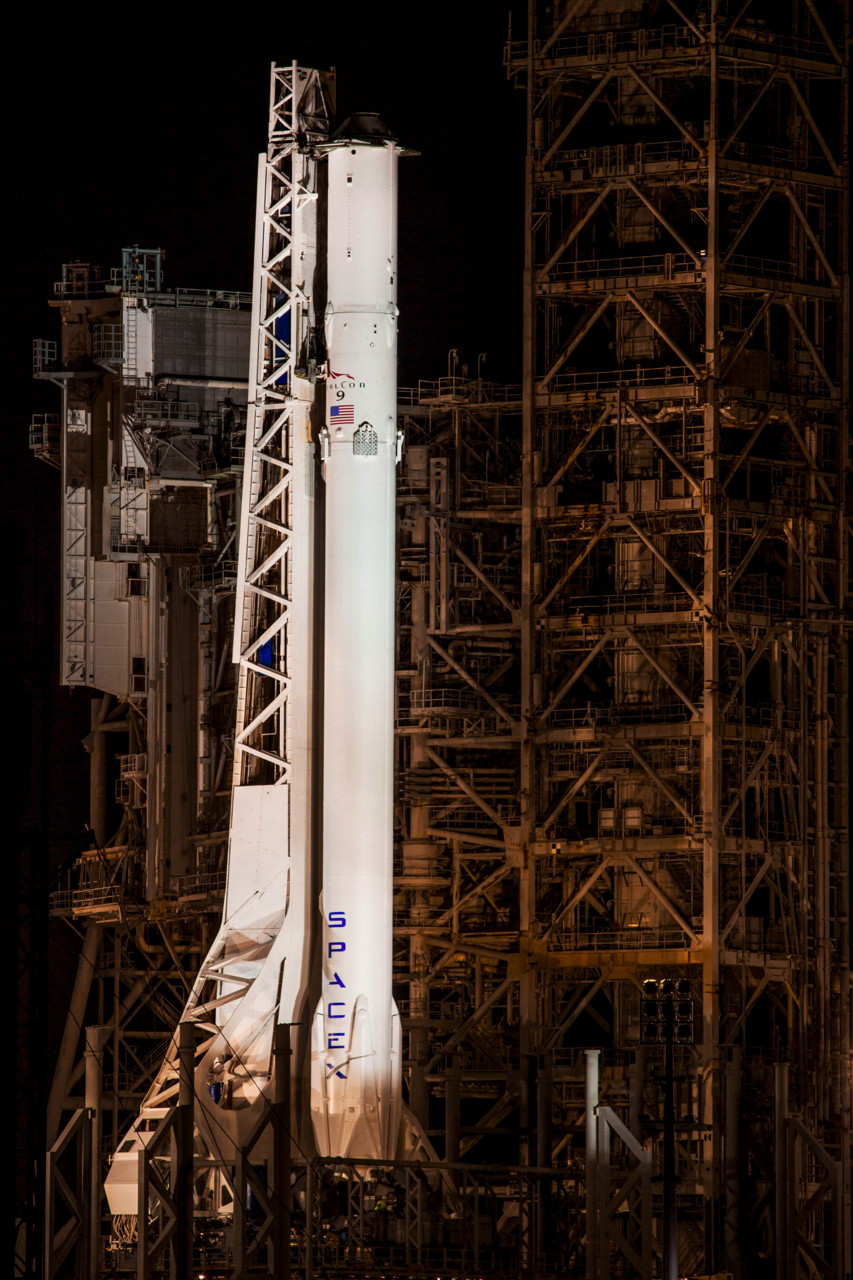
Most likely, Static Fire on Saturday. Unless there's a fueling or other issue with the new pad infrastructure or vehicle.

Most likely, Static Fire on Saturday. Unless there's a fueling or other issue with the new pad infrastructure or vehicle.
Hot fire test completed this evening.
https://spaceflightnow.com/2017/02/12/fire-returns-to-flame-trench-at-apollo-era-launch-pad-in-florida/
The hotfire test marked the first time a rocket ignited at pad 39A since July 8, 2011, when the final space shuttle mission blasted off there. The launch complex sat dormant for three years until SpaceX signed a 20-year lease to take over the pad in 2014.
The milestone static fire test is a major step leading to SpaceX’s first-ever launch from pad 39A scheduled for next Saturday, Feb. 18, with a Dragon supply ship carrying 5,266 pounds (2,389 kilograms) of equipment and experiments to the International Space Station.
https://spaceflightnow.com/2017/02/12/fire-returns-to-flame-trench-at-apollo-era-launch-pad-in-florida/
- Joined
- Jan 17, 2009
- Messages
- 5,204
- Reaction score
- 1,547
CRS-10 launch planned for Feb 18th (Saturday) at 10:01 AM EST.
Static Firing Pic and video:
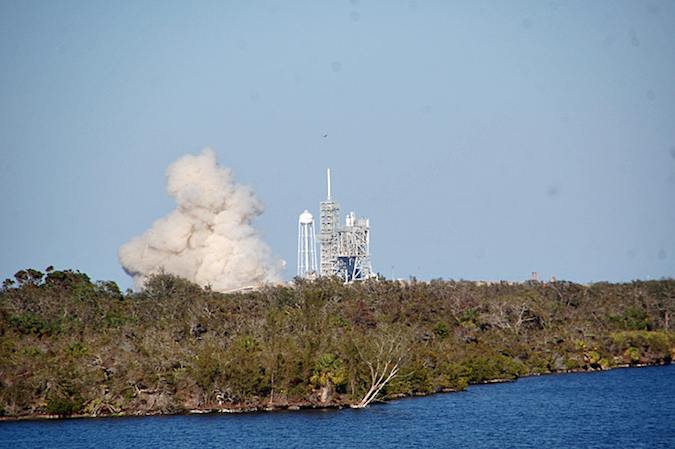
Firing is right about at 2:00 into the video:
[video=youtube;c6X1_IEfgtI]https://www.youtube.com/watch?v=c6X1_IEfgtI[/video]
Static Firing Pic and video:

Firing is right about at 2:00 into the video:
[video=youtube;c6X1_IEfgtI]https://www.youtube.com/watch?v=c6X1_IEfgtI[/video]
- Joined
- Jan 17, 2009
- Messages
- 5,204
- Reaction score
- 1,547
Launch set for 10:01 AM EST, Saturday Feb 18th. Alternate date Feb 19th.
Payload is CRS-10, ISS resupply mission for NASA.
The booster core WILL NOT be landing on the ASDS barge, OCISLY. Shocker, huh?
Well…… that’s because it is going to RTLS and land at LZ-1! The CRS-10 payload is light enough to allow the booster the fuel to boost back to the Cape. This will be the first daytime RTLS Falcon booster landing, 3rd landing for LZ-1.
The Falcon-9 with CRS-10 attached, was raised into position on Thursday. Link below to a short time-lapse video showing it being moved.
https://www.facebook.com/spaceflightnow/videos/1255099461226117/
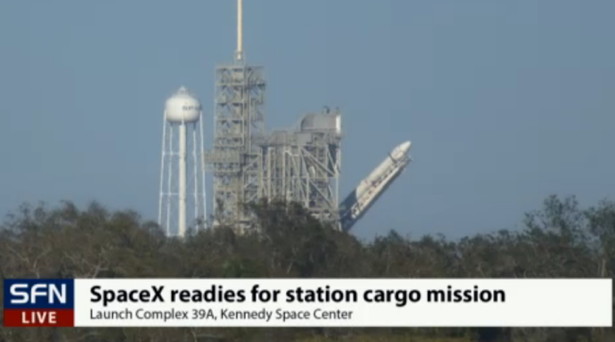
The NASA Channel should have the launch live. Of course they probably will not show the booster landing since the mission is about the payload. But nonetheless, it would be good to watch that on TV too, and especially after the booster has (hopefully) landed.
Hosted Webcast link:
[video=youtube;V5bG37hzwqk]https://www.youtube.com/watch?v=V5bG37hzwqk[/video]
Technical webcast link:
[video=youtube;v8U2KXZzvtA]https://www.youtube.com/watch?v=v8U2KXZzvtA[/video]
Pics:
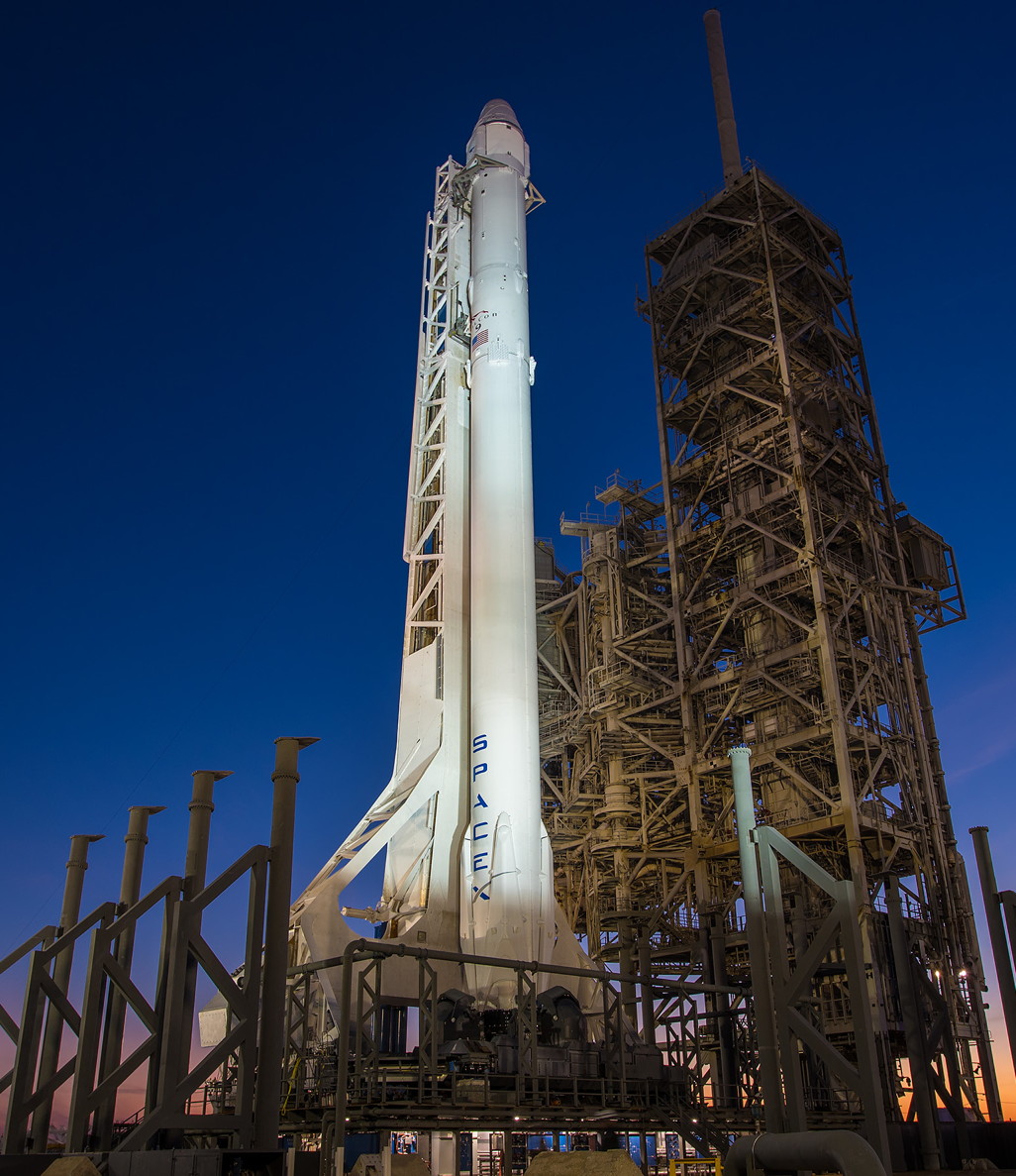
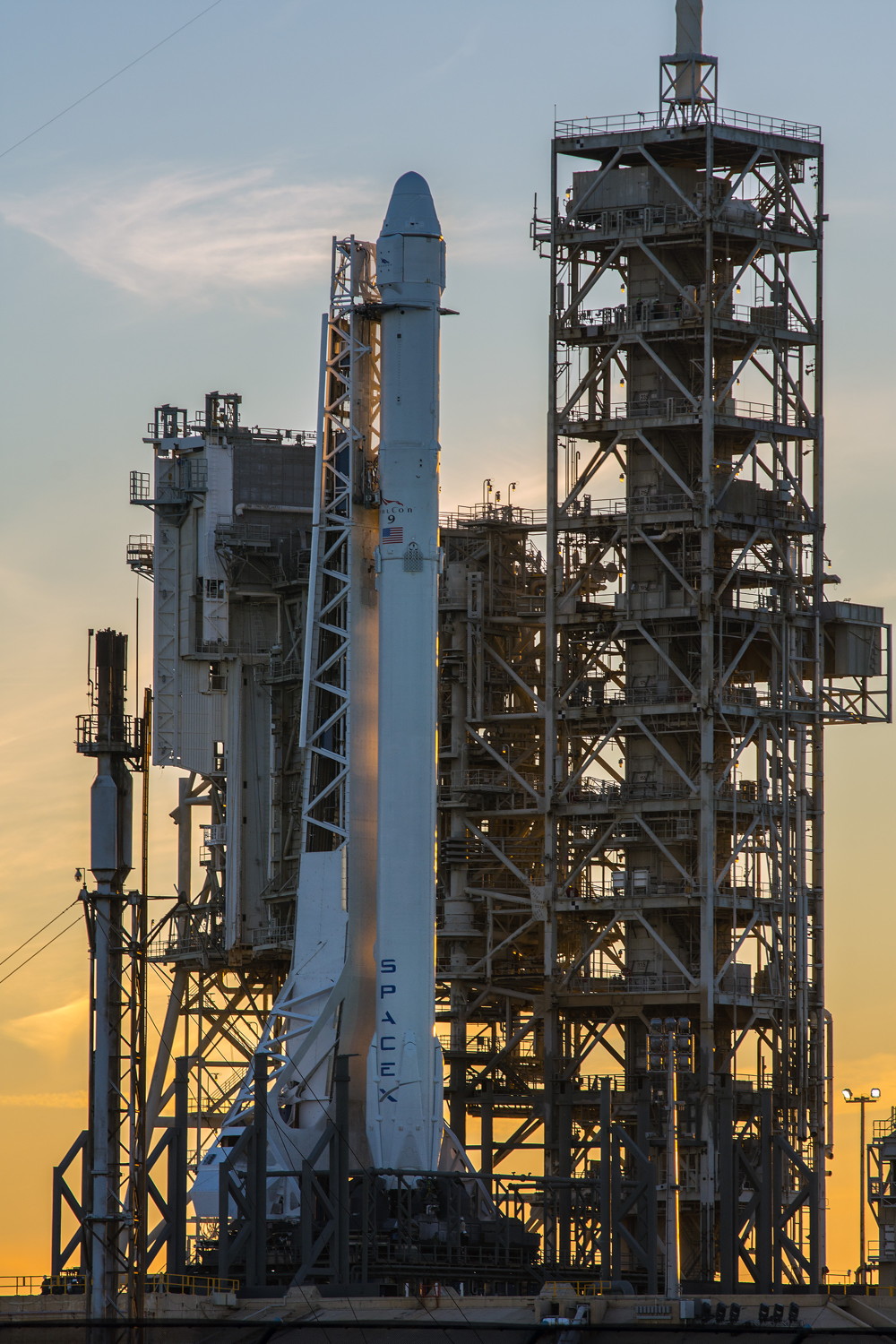
Payload is CRS-10, ISS resupply mission for NASA.
The booster core WILL NOT be landing on the ASDS barge, OCISLY. Shocker, huh?
Well…… that’s because it is going to RTLS and land at LZ-1! The CRS-10 payload is light enough to allow the booster the fuel to boost back to the Cape. This will be the first daytime RTLS Falcon booster landing, 3rd landing for LZ-1.
The Falcon-9 with CRS-10 attached, was raised into position on Thursday. Link below to a short time-lapse video showing it being moved.
https://www.facebook.com/spaceflightnow/videos/1255099461226117/

The NASA Channel should have the launch live. Of course they probably will not show the booster landing since the mission is about the payload. But nonetheless, it would be good to watch that on TV too, and especially after the booster has (hopefully) landed.
Hosted Webcast link:
[video=youtube;V5bG37hzwqk]https://www.youtube.com/watch?v=V5bG37hzwqk[/video]
Technical webcast link:
[video=youtube;v8U2KXZzvtA]https://www.youtube.com/watch?v=v8U2KXZzvtA[/video]
Pics:


Last edited:
Thank You Kindly George for your continued dedication to this thread.
I really appreciate it.
I really appreciate it.
Me too!
rc dude
Well-Known Member
- Joined
- Jan 15, 2012
- Messages
- 434
- Reaction score
- 34
They are investigating a small leak in the second stage...
It is a small leak in the helium system according to Shotwell. The helium is used to start spinning the turbopumps for the Mvac. The launch is still currently a go.
- Joined
- Jan 17, 2009
- Messages
- 5,204
- Reaction score
- 1,547
From a post on NSF:
A good sign. Though not definitive. As of now,still go.
The "spin system" spins up the turbines before the Lox and RP-1 enter the pumps (both stages have them). I didn't know that, asked and got the answer.
Update on upper stage leak from Nasa TV 39A: Helium leak in the spin system on the second stage, "I believe we found it...as far as I know we're going to proceed into the count"
A good sign. Though not definitive. As of now,still go.
The "spin system" spins up the turbines before the Lox and RP-1 enter the pumps (both stages have them). I didn't know that, asked and got the answer.
- Joined
- Jan 17, 2009
- Messages
- 5,204
- Reaction score
- 1,547
Musk tweeted this:
So the launch is a go, but be aware it might stop at T-60 seconds.
BTW - there is no "launch window" (due to orbital mechanics for ISS Rendezvous), so if the count stops for any reason, that's it for the day.
Again, launch is set for 10:01 AM EST.
See links further up for SpaceX webcasts, and perhaps check out/record the NASA channel too.
"Looks like we are go for launch. Added an abort trigger at T-60 secs for pressure decay of upper stage helium spin start system."
So the launch is a go, but be aware it might stop at T-60 seconds.
BTW - there is no "launch window" (due to orbital mechanics for ISS Rendezvous), so if the count stops for any reason, that's it for the day.
Again, launch is set for 10:01 AM EST.
See links further up for SpaceX webcasts, and perhaps check out/record the NASA channel too.
Last edited:
- Joined
- Jul 23, 2012
- Messages
- 1,899
- Reaction score
- 872
NASA TV is live now.
[video=youtube;UdmHHpAsMVw]https://www.youtube.com/watch?v=UdmHHpAsMVw[/video]
SpaceX streams go live in about a half hour...
[video=youtube;v8U2KXZzvtA]https://www.youtube.com/watch?v=v8U2KXZzvtA[/video]
[video=youtube;V5bG37hzwqk]https://www.youtube.com/watch?v=V5bG37hzwqk[/video]
[video=youtube;UdmHHpAsMVw]https://www.youtube.com/watch?v=UdmHHpAsMVw[/video]
SpaceX streams go live in about a half hour...
[video=youtube;v8U2KXZzvtA]https://www.youtube.com/watch?v=v8U2KXZzvtA[/video]
[video=youtube;V5bG37hzwqk]https://www.youtube.com/watch?v=V5bG37hzwqk[/video]
Similar threads
- Replies
- 5
- Views
- 603
- Replies
- 7
- Views
- 560
- Replies
- 29
- Views
- 2K
- Replies
- 6
- Views
- 2K


